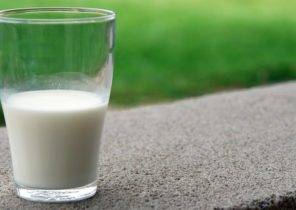In a pandemic coronavirus, which affects all areas of our lives, many of us, because of the General closure try to eat for a long time bought products to make room for new inventory, fearing the high price of the goods or their disappearance from the shelves. This is not surprising because we do not know when we can finally turn the page of our history that is associated with the coronavirus, and return to normal life.
Fortunately, in our time, perishable foods last longer thanks to modern storage methods such as freezing, canning, vacuum sealing and the use of chemical preservatives, but this raises the question — how did our ancestors store food with no refrigerator, no preservatives and using only natural ways?
The problem of humanity
One of the problems faced by people since the dawn of humanity, was the need to preserve food, so she is not spoiled because of insects or microorganisms.
Although the current advanced technology did not exist, our ancestors managed to invent different methods of food preservation.
In fact, every culture and nation in the world since ancient times had their own ways of storing food. For example, the ancient Egyptians are considered the first who discovered the method of pickling involves using coarse sea salt for the storage of all types of meat and fish, since salt absorbs moisture and kills bacteria.
Also the ancient people dug pits in the ground, and then covered the walls with wood, leaves or straw to form a kind of barrier between food and soil. Food is often kept in leather bags, baskets made of cane or pottery, which were placed in caves or dug pits in the ground.
Storage
Over the years, archaeologists have discovered evidence of the existence in the distant past, different ways to maximize long-term storage of food. It is amazing that some of these methods are common now, for example, drying and fermentation, while others eventually disappeared. These include a method such as immersion oil in peat bogs.
We can say, the most common methods of storing food in the past were drying, salting, Smoking, fermentation and cooling in natural refrigerants, such as streams and pits.
For example, the indigenous people of Scandinavia, were hunting deer in the fall and winter. They preserved the meat by drying or Smoking, and milk turned into cheese in the form of solid blocks that could be stored for years.
Of course, it can be considered an effective all these different methods of long storage of food, because they slowed down the growth of microbes. In this regard, one of the best ways of storage is drying, because microorganisms require a certain amount of moisture as a breeding ground. In her absence, the microbes are killed (or at least fall asleep). In addition, the method of drying prevents oxidation and enzyme activity, i.e., natural processes of transformation of food, which cause changes in its taste and color.
Amazing discoveries point to the use in antiquity of Smoking and fermentation
To determine methods of storage of food, which were probably used by our ancestors, the archaeologists decided to study not only found remnants of food, but also used their devices. As you know, was found a piece of dried deer meat, which is 14 thousand years, and those discoveries have been made quite a lot. In other words, in ancient times, people have successfully kept food.
For example, in one of the places in Sweden, researchers found a hole in the shape of the gutter, which can be from 8600 to 9600 years. She was filled with more than 9 thousands of bones of fish, as reported in the study in 2016, published in The Journal of Archaeological Science.
Elsewhere, outside of this of the gutter, were found the remains then the most common types of fish, such as bass, while inside the pit is a large part of the finds were the remains of small fish that is difficult to eat without any processing.
Approximately one-fifth of food was found were traces of oxidation, allowing the researchers came to the conclusion that this pit was used for the fermentation of food. In other words, it was found evidence of use by our ancestors fermentation as a method of food storage.
Similarly, in a study published in The Journal of Archaeological Science in 2019, the researchers analyzed more than 10 thousand animal bones found in Jordan. These remains are about 19 thousand years.
It is noteworthy that about 90% of the animal bones belonged to a deer were found near the places for bonfires. In them was found a hole with a width of 2 to 4 inches, which was probably intended for the simplest of support structures.
Based on these findings, the study authors suggested that in the holes of the fixed shelf where the meat is smoked and dried.
Ancient food edible today
Some of the remains of food can be consumed even today, or at least to use for cooking new food and drinks.
So, last year, researchers from the Hebrew University in Jerusalem recovered yeast cells, found in ancient clay pots.
As scientists have assumed, given the form of products, these pots were containers for beer. They were found among the 4 archaeological finds, which are from 2 to 5 thousand years.
After extracting ancient yeast strains, the researchers used to brew beer, and according to their study, published in the journal mBio in 2019, members of the Beer Judge Certification Program recognized that this drink is suitable for drinking and the color and smell similar to English beer.
The bogs of Ireland and Scotland was also made an interesting discovery. There were found about 500 bars of butter.
It is interesting to note that, at least since the bronze age (i.e. approximately 5 thousand years ago) and until the XVIII century people were buried in the swamps of butter. Researchers are trying to determine the purpose of such storage of this product. Perhaps it was stored for future use in the course of certain rituals or tastiness.
Regardless of what their logical arguments, our ancestors succeeded in slowing the growth of bacteria in food due to storage in peat bogs with high acidity and low oxygen content.
Therefore, forgotten oil supply was stored there for millennia. Some of them very large, such as 3000-year-old specimen, discovered in 2009, or a sample, found in 2013 and which 5 thousand years.
As stated by archaeologists, theoretically swamp the oil is edible, but still taste his taste not recommended.
It is worth noting that the famous chef tried a sample of this butter and took part in one of the editions of the Stephen Colbert — The Late Show.
No doubt, insects and damage caused by moisture, weather conditions, mould or mushrooms, reduce the quality of stored products. All of this can be considered when planning future food storage, because if we will learn how the ancient peoples and civilizations stored their food, you may also be able to resort to these traditional methods. Thus we will be ready for any sudden events, after all, warns the United Nations, the world may be faced with a terrible famine due to the impact of the pandemic coronavirus. If so, then it is better to withhold as much food for a rainy day.







